
Once a bulwark for an apartheid state, SA's arms industry shrank post-1994 as government spending on defence gave way to social priorities.
Now, as government mulls ways to reindustrialise SA's economy, the sector is enjoying renewed attention for its ability to attract scarce skills and help SA keep a foothold in the global technology race.
However, SA is a small player in the vast international arms market which the US Congressional Research Service reported to be worth US85bn in global trade in 2011.
In niche sectors, however, SA's industry is holding its own, trebling exports over the past five years to R9,2bn in 2011. Excluding the US, which accounted for over three-quarters of global arms exports in 2011, this gave SA a market share of about 7%.
With local demand limited by a cash-strapped SA National Defence Force (SANDF), exports have become the mainstay of SA's defence industry, accounting for two-thirds of its revenue. In 2011 the industry's total revenue was about R14bn, excluding non-military equipment, says Simphiwe Hamilton, executive director of the Aerospace Maritime & Defence Industries Association.
Growth in SA's arms exports over the past five years has been driven by private-sector players starved of SANDF orders. State-owned Denel, which has been immersed in a complex restructuring, has made no progress. Highlighting this, in its year to March 2007, Denel reported total revenue of R3,3bn of which R1,7bn (52%) was from exporting. In its latest year to March 2012 total revenue came in at R3,5bn, of which R1,3bn (37%) was from exports.

Export growth has rested heavily on wheeled armoured vehicles, a sector in which SA has built a reputation as a world leader over the past four decades. "The main driver of export growth has been the demand for MRAPs [mine-resistant ambush-protected vehicles] from the US," says Hamilton.
In 2007 the US military launched a R17,6bn programme to buy 10,000 of these vehicles, primarily for use in Afghanistan and Iraq.
Strong growth has also been recorded in exports to the Middle East, Latin America and some African countries, says Hamilton.
Leading in the export field is BAE Land Systems SA Formerly Reumech, a unit of Reunert sold to UK firm Vickers in 1999, BAE Land Systems SA was acquired by UK arms giant BAE Systems in 2004. BAE Systems has a 75% stake in BAE Land Systems SA with black economic empowerment partner DGD Technologies owning the balance.
"We are the biggest exporter, with the US being by far our largest market," says Johan Steyn, MD of BAE Land Systems SA. "Over the past five years we have sold the US military just under 2,000 vehicles, of which 80%-90% were for use in Iraq and Afghanistan."
Other major buyers of BAE armoured vehicles include Finland, Sweden, Ireland and countries in the Middle East, Steyn says. Exports represent 80% of BAE Land Systems SA's arms sales, which also include turret weapon control systems.
DCD (formerly DCD-Dorbyl) has also excelled in the armoured vehicle export market. Its success has been spearheaded by the Husky, a 9t mine-detection armoured vehicle originally designed for the SANDF in the 1970s.
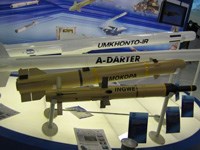
Refined over the years, the Husky has enjoyed strong demand from the US Army and Marine Corps for use in Iraq and Afghanistan, with smaller numbers sold to Canada, France and the UK, says DCD Protected Mobility GM Andrew Mears "The Husky is affordable, provides a high level of protection and is easy to repair in the field," says Mears. "We have sold over 1,600 to the US so far."
"We still have ongoing orders from the US," says Mears, who expects DCD Protected Mobility to generate sales of between R1,2bn and R1,3bn in 2012. Sales will include the new Husky 2G, a two-seater version developed for the US Army to house a detection systems operator. In 2011 the Husky 2G was voted one of the 10 most innovative advances in technology by the US Army.
Denel is also looking to ramp up exports, says the state-owned arms manufacturer's group CEO, Riaz Saloojee With Denel's restructuring now complete, he says it can switch from an "inward to an outward focus".
Restructuring of Denel, which ran up total losses of R2,8bn between 2006 and 2009, was essential to ensure its survival. Denel was geared to support a military on a war footing, says Saloojee. "After 1994 things changed fundamentally and Denel found itself with infrastructure and employee numbers that did not match the new situation." At its peak Denel employed 10,000 people, it now employs about 6,500, he says.
Denel, says Saloojee, is a custodian of SA's "strategic and sovereign" security capability and must also be an incubator for new technology and skills. This mandate dictates that it will not achieve the level of profitability for which a private-sector firm would strive. "But Denel must be sustainable and not a burden to the state," he says.
Denel reported a net profit of R41m in its financial year to March 2012, down from R111m the previous year.
Hindering Denel's profit-generating ability are sales which are too low relative to its employee base, says Saloojee. "We have to grow sales but can't rely on only the SANDF to do this. We have to grow exports."
Saloojee sees emerging economies in Africa, the Middle East and Asia as key drivers of export growth. "That is where defence expenditure is growing."

Denel's efforts are already yielding results. One of the high points is its Denel Land Systems unit clinching a US$348m deal with Malaysia. It is Denel's largest-ever export order. The deal will run over seven years and covers 69 armoured vehicle turrets equipped with Denel's GI30 30mm gun and 54 turrets equipped with GI-30s and its Ingwe antitank missile and remote control weapons system.
"The contract is a huge accolade for Denel," says Saloojee. "We won it in the face of stiff international competition." It also highlights that few countries, even developed ones, have a defence industry with the technology and manufacturing capabilities SA has, he says.
Another thrust of Denel's export drive is through joint ventures, technology transfers and joint R&D initiatives, says Saloojee. "We call it smart partnering."
These initiatives are bearing fruit. Among them is Denel Dynamics' joint development of the A-Darter air-to-air missile with Brazilian firms Mectron, Avibras and Eletronica. "A-Darter is a seriously good weapon," says defence industry analyst Helmoed Heitman
Denel Dynamics has also forged an alliance with United Arab Emirates (UAE) arms company Tawazun Holdings to establish a JV to be named Tawazun Dynamics. "The new company will focus on production of precision-guided munitions," says Saloojee. Beyond serving the UAE's armed forces, he says Tawazun Dynamics will be a platform for exports into the region.
However, say industry players, no defence industry can thrive in the tough global export market without strong backing from its own military to develop and showcase new technology. "SA could fall behind if the SANDF does not buy new equipment," says Steyn. The export market, he adds, is also likely to get tougher. "Exports will shrink over the next five years," he predicts.
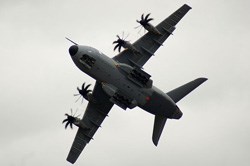
A major factor for SA armoured vehicle exporters will be the US's withdrawal from Afghanistan, which is scheduled to be completed at the end of 2014. The US department of defence has announced plans to mothball all but a small number of its fleet of mine-resistant ambush-protected vehicles. SA arms industry exports to the US amounted to R2,48bn in 2011 and R1,3bn in 2010, according to the National Conventional Arms Control Committee, a statutory body tasked with overseeing SA's arms industry and arms trade.
Heitman shares Steyn's view on the importance of domestic sales to a country's defence industry. "You must sell to your own armed forces," says Heitman. "It becomes very difficult to fund R&D of new equipment and export if your own armed forces do not buy it and have it in service."
"SA's defence industry must keep up with R&D or it will lose relevance," says Talib Sadik, Denel group CEO between June 2008 and August 2012.
Heitman believes SA is already falling behind in the arms technology race. "[SA's] armoured vehicle exports are on the back of technology developed in the 1970s and 1980s," he says.
DCD recognises this, says Mears. "We are looking at the possibility of a next-generation armoured vehicle," he says. However, its development and possible production are still years in the future and would have to be in partnership with another big player, he adds.
SA has also lost its edge in artillery, an area in which Denel's G5 and G6 guns were once world leaders, says Heitman. "The G5 and G6 had a range of 40-50km at a time when the best the competition could offer was 25km," he says. "Now everyone has guns with a 40-50km range." The G5 and G6 guns were developed in the 1980s.
Heitman believes SA could regain its edge in artillery with a new 105mm diameter barrel on which Denel has completed three-quarters of the development work. "It would give the G5 and G6 a range of 75km," says Heitman. "Even the US Army would buy it." However, he says, development is on hold because the SA Army does not have enough money for equipment to justify its completion.
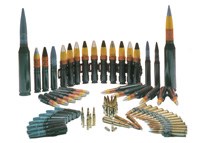
As a whole the SANDF is under severe financial pressure because of inadequate funding. In the 2012/2013 budget, the SANDF was allocated R37,5bn, an amount equal to 3,9% of treasury's main budget expenditure. The allocation equals about 1,2% of SA's GDP. Under peacetime conditions the IMF believes 2% of GDP is a fair level for a country to spend on defence.
"But the SANDF is not functioning under completely peacetime conditions," says Heitman, pointing to the army's peacekeeping roles in the Democratic Republic of Congo and Sudan's Darfur region, and the navy's anti-piracy operations in the Mozambique Channel. Spending on new equipment, R&D and refurbishment of equipment is at 14% of the defence budget, which is also well below the accepted minimum norm of 30%, he adds.
More demands are being placed on the army through its increasing role in patrolling SA's 4,471km land border to prevent illegal immigration and livestock and rhino poaching. Further demands could also come through a mooted peacekeeping role in Mali. "The army is probably only half the size it should be to meet the demands being made on it," says Heitman.
Retired army general Len le Roux shares this view. Addressing the Institute for Strategic Studies in April he noted that there was a "gross mismatch" between defence policy as practised and defence funding.
Former defence minister Lindiwe Sisulu was well aware of the SANDF's plight and slammed defence spending as being "hopelessly inadequate". She called for at least 2% of GDP to be spent on defence. In a cabinet reshuffle in June this year Sisulu was shifted to the department of public service & administration and replaced as defence minister by Nosiviwe Mapisa-Nqakula.
The vital role played by SA's defence industry has been given prominence in the draft consultative defence review published for public comment in April this year. The 420-page document is meant to serve as a roadmap for the SANDF's development and equipment needs over the next 30 years.
On the defence industry, the review states: "A vibrant, focused defence industry is a major asset to the country, strengthening defence and security capability; supporting foreign policy initiatives, particularly within the region and the continent; and supporting the national development agenda."
Tactical vehicles suited to African conditions; mine-detection vehicles and equipment; long-range artillery; precision weapons; electronic warfare technology; communications; and chemical, biological and radiological defence are some of the areas the review pinpoints for special support. The review also highlights the need to support SA's aerospace industry.
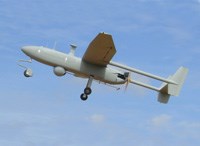
The defence review finds the SANDF, particularly the army, to be woefully lacking the equipment it needs to fulfil its obligations in SA and on peacekeeping missions. It also notes the army, which was not a beneficiary of SA's R30bn arms deal, finds itself in a position termed "block obsolescence" of dated equipment in three critical areas: infantry combat vehicles, armoured personnel carriers and logistic vehicles.
To support peacekeeping missions, the defence review also highlights the army's need for additional artillery and a new main battle tank to replace the totally obsolete Oliphant, which dates back to the 1950s.
On the SA Air Force's immediate and medium-term requirements, the review notes that it requires additional equipment, including transport and maritime patrol aircraft, heavy-lift helicopters and a wide range of weaponry. The review states that to meet its anti-piracy obligations, the SA Navy requires "urgent acquisition of a second combat support ship". The SA Navy's capability to counter piracy is "an area of particular concern", says Sadik.
Heitman paints an alarming picture if defence spending is not increased significantly. "The defence force will grind to a halt in the next three years," he warns. "The defence industry will ultimately follow."
As matters now stand there are no plans to increase the SANDF's share of the national budget pie. According to treasury's medium-term budget forecast, defence spending will fall from 3,9% of budgeted expenditure this fiscal year to 3,8% in 2013/2014 and 3,7% in 2014/2015. This would take defence spending to R39,9bn in 2013/2014 and R42,3bn in 2014/2015, an overall increase of only R4,8bn (6,2%/year) over the next two fiscal years.
"The significance of a strong defence industry should not be underestimated," says Richard Haines, head of the department of development studies at Nelson Mandela Metropolitan University. Haines, who has just completed a study of the defence industry in the Western Cape, says: "The defence industry is an underestimated part of SA's industrial base."
Defence spending, he says, is one of the more productive parts of state spending. Among positive spin-offs, he says, is job creation, especially at the high skills level, technological developments with relevance beyond the military, and the promotion of exports. Military bases can also contribute significantly to uplifting local communities, he adds.
"SA has already lost a huge portion of its industrial base. It is in danger of losing even more," says Haines. "Some companies in SA's defence base are already fairly marginal."
There are already casualties. After a failed bid to be placed under business rescue, Advanced Technologies & Engineering (ATE), a civil and military aeronautical engineering firm, is scrambling to attract new investors to avert its liquidation. The plight of the 26-year-old firm stems from its failure to secure contracts it had banked on getting, says ATE spokesman Lorris Dancker.
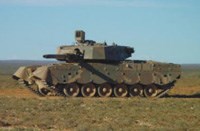
Reutech, the radar and communications equipment unit of Reunert, provides insight into the skills and technology spin-offs the defence industry can yield. Reutech, says its chief operating officer Peter van der Bijl, employs about 700 people, of whom 150 are engineers involved in R&D while many others are highly skilled technicians. "Our staff includes a lot of young people attracted to the hi-tech sector," says Van der Bijl.
In the defence arena, Van der Bijl says Reutech's focus is on tactical radio equipment and radar. "We produce world-class products," he says. "We have sold equipment to Nato countries. They buy on quality, not price."
For Reutech a major spin-off of its radar technology R&D has been the application of radar in the open-cast mining industry to monitor pit walls prone to collapse.
"It has doubled the size of our radar business," says Van der Bijl. It is a market segment in which Reutech has a significant competitive advantage. "Globally, we have few competitors," he says.
Reutech is already exporting its mining radar equipment to Northern Europe, the Middle and Far East and is looking to expand into Eastern Europe, China and India, says Van der Bijl.
Reutech has annual revenue of R750m, of which Van der Bijl says about half is earned through exports. He says Reutech is in the process of acquiring SAAB Grintek's high-frequency radio unit, a move that will double Reutech's radio product range.
Heitman believes that to meet demands on the SANDF in terms of manpower and equipment, defence spending should be at least 2,5% of GDP. However, even at 2% of GDP, he says the SANDF's situation would improve significantly. "The increase would have to be phased in over about five years." The increase would "stop the slide" in two years, provide SA with a "good" defence force in five years, a "really good" one in 10 years and achieve the defence review's full vision in 30 years, he says.

An increase in the SANDF's budget allocation to 2% of GDP would boost spending by R24bn to about R64bn, based on treasury's forecast for 2013/2014. With 30% of the spending allocated to equipment, this would pump up to R19bn annually into SA's defence industry, a huge increase on the R4,5bn it currently generates from domestic sales.
Heitman believes defence spending at 2% of GDP has the potential to create an extra 20,000 jobs, many in highly skilled areas. At present the defence industry employs about 13,500 people and, says Saloojee, supports as many as 60,000 jobs indirectly.
The next move on the defence review is up to government. "Our task is done but it is not yet a fait accompli," says Roelf Meyer, chairman of the defence review committee. "The draft must still be presented to the defence minister and cabinet."
Sadik has his doubts about government's willingness to increase defence spending significantly.
"Government has a difficult balancing act," he says. "Defence is competing with the demands of social issues for a share of the budget."
Heitman is wary of the outcome. "My fear is that government will want the SANDF to carry on with its peacekeeping role in Africa, even extend it, but not come up with the money needed."
Source: Financial Mail via I-Net Bridge

For more than two decades, I-Net Bridge has been one of South Africa’s preferred electronic providers of innovative solutions, data of the highest calibre, reliable platforms and excellent supporting systems. Our products include workstations, web applications and data feeds packaged with in-depth news and powerful analytical tools empowering clients to make meaningful decisions.
We pride ourselves on our wide variety of in-house skills, encompassing multiple platforms and applications. These skills enable us to not only function as a first class facility, but also design, implement and support all our client needs at a level that confirms I-Net Bridge a leader in its field.
Go to: http://www.inet.co.za